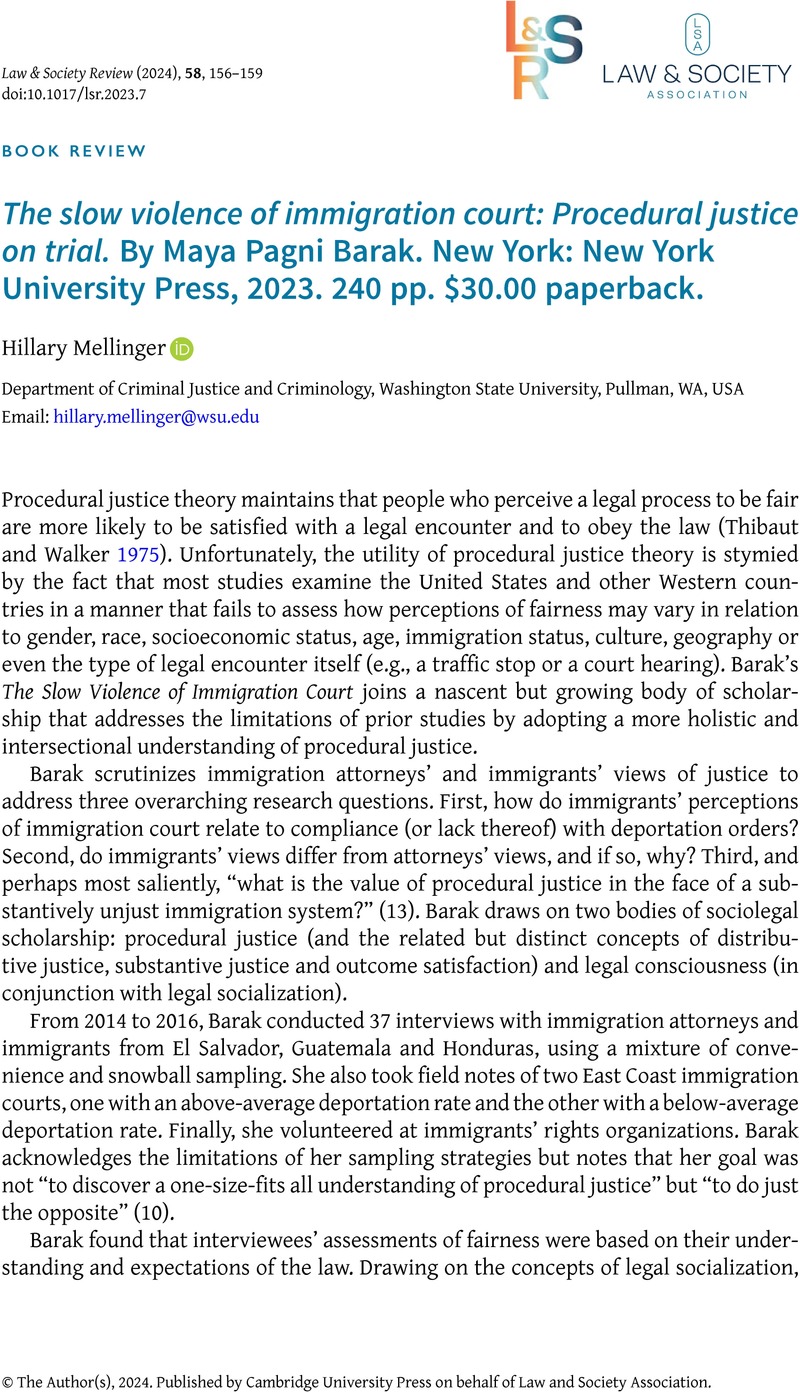No CrossRef data available.
Article contents
The slow violence of immigration court: Procedural justice on trial. By Maya Pagni Barak. New York: New York University Press, 2023. 240 pp. $30.00 paperback.
Review products
The slow violence of immigration court: Procedural justice on trial. By Maya Pagni Barak. New York: New York University Press, 2023. 240 pp. $30.00 paperback.
Published online by Cambridge University Press: 27 March 2024
Abstract
An abstract is not available for this content so a preview has been provided. Please use the Get access link above for information on how to access this content.

Information
- Type
- Book Review
- Information
- Copyright
- © The Author(s), 2024. Published by Cambridge University Press on behalf of Law and Society Association.
References
Thibaut, John W. and Walker, Laurens. 1975. Procedural Justice: A Psychological Analysis. New York, NY: L. Erlbaum Associates.Google Scholar


